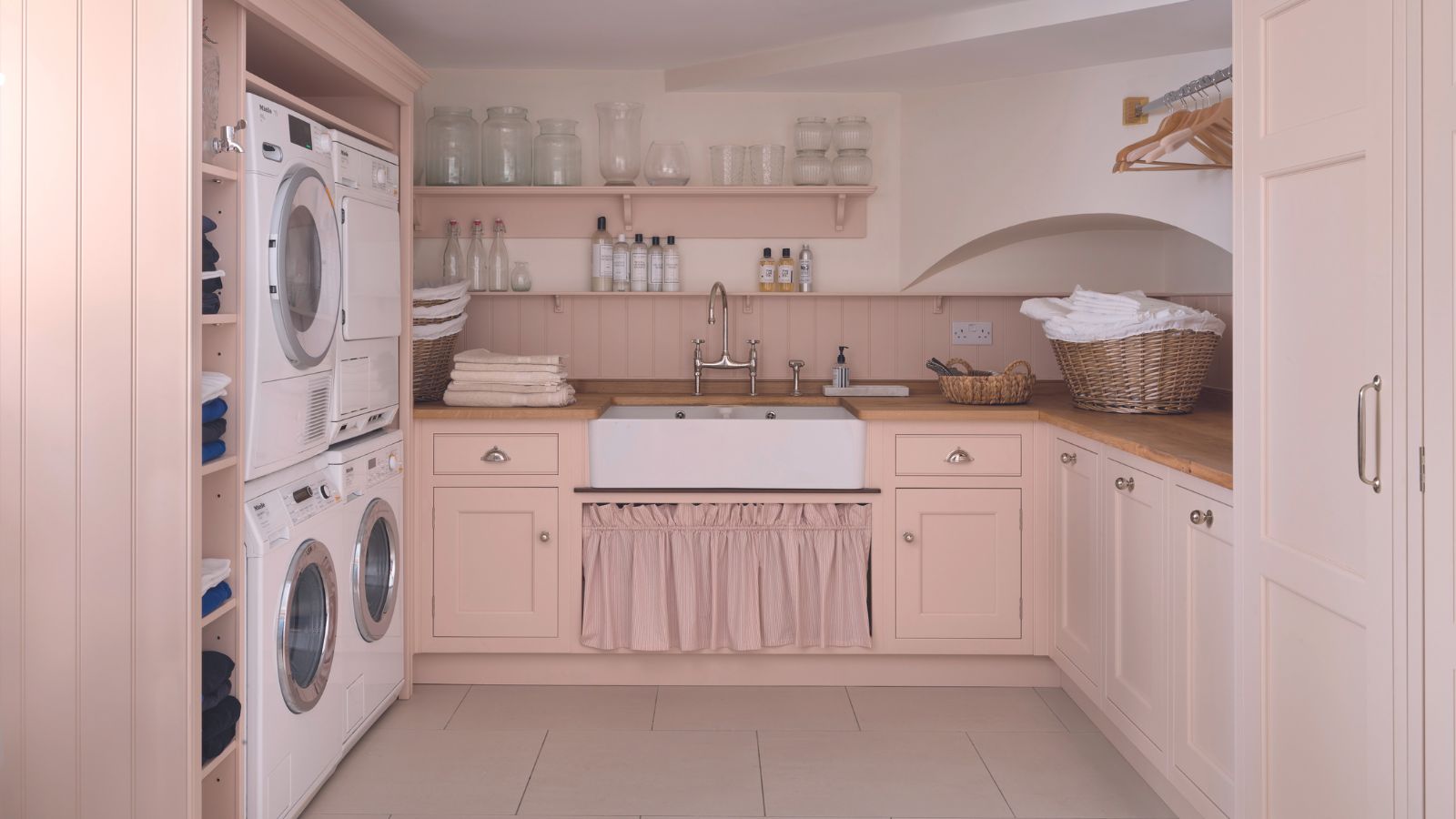

Articles
How To Design A Laundry Room
Modified: February 20, 2024
Learn how to design an efficient and functional laundry room with our articles. Get expert tips and ideas for maximizing space and organization.
(Many of the links in this article redirect to a specific reviewed product. Your purchase of these products through affiliate links helps to generate commission for Storables.com, at no extra cost. Learn more)
Introduction
Welcome to the ultimate guide on how to design a laundry room. Whether you are remodeling an existing laundry space or creating one from scratch, this article will provide you with all the information you need to design a functional and aesthetically pleasing laundry room.
The laundry room is often an overlooked area in the home, but it plays a crucial role in maintaining a clean and organized household. A well-designed laundry room can streamline your laundry routine, maximize space, and make the process of washing and drying clothes a breeze.
In this article, we will take you through a step-by-step process to help you create a laundry room that meets your needs and preferences. From evaluating the space to incorporating personalized touches, we will cover everything you need to know to make your laundry room both practical and visually appealing.
Whether you have a small laundry closet or a spacious room, the principles of good design remain the same. By following the steps outlined in this guide, you will be able to transform your laundry room into a functional and efficient space that complements the overall style of your home.
So, grab a cup of coffee and let’s dive into the world of laundry room design, where functionality meets style and organization meets efficiency.
Key Takeaways:
- Transform your laundry room into a functional and visually appealing space by carefully evaluating the layout, choosing efficient appliances, and incorporating personalized touches to create a joyful environment for this essential household task.
- Design a laundry room with efficiency and ergonomics in mind, optimizing the layout, incorporating ergonomic tools, and adding personal touches to create a space that streamlines your laundry routine and brings you joy.
Read more: What Is A Laundry Room
Step 1: Evaluate the Space
The first step in designing a laundry room is to thoroughly evaluate the space you have available. This will help you determine the optimal layout and identify any limitations or challenges that need to be addressed.
Start by measuring the dimensions of the room, including the height, width, and depth. This information will be crucial when selecting appliances, storage solutions, and other elements for the laundry room.
Next, consider the location of the laundry room within your home. Is it conveniently located near bedrooms or bathrooms, or is it tucked away in a basement or garage? Assessing the proximity to other areas of the house will help you understand the traffic flow and determine the functionality of the space.
Additionally, take note of any architectural features or obstacles in the room, such as windows, doors, pipes, or electrical outlets. These elements will impact the placement of appliances and storage solutions.
Another important factor to consider is the available plumbing and electrical connections. It’s essential to ensure that the necessary hookups are in place or can be easily installed to accommodate your desired laundry room design.
Finally, evaluate the existing infrastructure and storage options. Assess the current shelving, cabinets, or hooks, and determine if they can be integrated into the new design or if they need to be replaced or upgraded.
By thoroughly evaluating the space, you will have a clear understanding of its limitations and possibilities. This will help guide your decision-making process as you move on to the next steps in designing your laundry room.
Step 2: Consider Layout and Flow
Once you have evaluated the space, the next step is to consider the layout and flow of your laundry room. The layout should be designed to maximize efficiency and make it easy for you to move around and complete tasks.
Start by determining the placement of the main elements in the room, such as the washer, dryer, and utility sink. Consider the most convenient and practical location for these appliances, taking into account factors like plumbing and electrical connections.
When deciding on the placement of the appliances, also consider the workflow. Ideally, you want a smooth flow from one task to another. For example, it makes sense to have the washer and dryer next to each other for easy transfer of laundry between the two.
Additionally, take into account any additional features or equipment you plan to incorporate into the laundry room. This could include folding tables, ironing boards, or drying racks. Consider how these elements will fit into the overall layout and ensure there is enough space for them.
Furthermore, it’s important to consider the ergonomics of the space. Ensure that countertops and work surfaces are at a comfortable height for tasks like folding or ironing. Incorporate storage solutions that are easily accessible and organized for efficient use.
Another aspect to consider is the traffic flow within the room. Take note of door placements and ensure there is enough space to easily maneuver around without feeling cramped. Avoid placing obstacles or furniture in the way of the main pathway.
Lastly, consider the overall aesthetic of the room and how it fits with the style of your home. Choose a layout that is visually appealing and complements the design of the rest of your house. This could be achieved through the use of color schemes, lighting, or decorative elements.
By carefully considering the layout and flow of your laundry room, you can create a space that is not only efficient but also visually pleasing and comfortable to work in.
Step 3: Determine the Appliances Needed
Choosing the right appliances is a crucial step in designing a functional laundry room. Consider your specific needs and preferences to determine the appliances that will best suit your laundry routine.
Start by evaluating the size of your household and the amount of laundry you typically do. This will help you determine the capacity needed for both the washer and dryer. Larger households may benefit from larger capacity appliances to handle larger loads and reduce the number of cycles required.
Next, consider the type of washer and dryer that best suits your needs. There are several options available, including top-loading and front-loading washers, as well as gas or electric dryers. Each has its own advantages and disadvantages, so take the time to research and compare before making a decision.
Additionally, consider any specific features that are important to you. This could include options for steam cleaning, energy efficiency, or noise reduction. Remember to also consider the maintenance requirements and ease of use of the appliances you choose.
Another consideration is whether you want to stack the washer and dryer or have them side by side. Stacking can be a great space-saving solution, especially in smaller laundry rooms, but make sure to check if your chosen appliances are stackable.
Furthermore, don’t forget about other appliances that might be valuable additions to your laundry room. This could include a utility sink for handwashing or soaking items, a garment steamer for removing wrinkles, or even a drying cabinet for delicate items.
Lastly, set a budget for your appliances and consider the long-term cost. Look for appliances that are both energy efficient and have a good track record for reliability and durability.
By carefully considering your needs, preferences, and budget, you can choose the appliances that will efficiently and effectively handle your laundry load in a way that suits your lifestyle.
Step 4: Plan Storage Solutions
Efficient storage is vital for a well-organized and functional laundry room. Planning the right storage solutions will help you keep your laundry supplies, cleaning products, and other essentials easily accessible and neatly arranged.
Start by assessing the amount of storage space you have available in the room. This could include cabinets, shelves, or even built-in closets. If your laundry room is small, consider utilizing vertical space by installing wall-mounted shelves or cabinets.
Next, determine the items you need to store and their respective sizes. This could include detergent, fabric softener, stain removers, cleaning tools, and extra linens. Categorize these items and consider how frequently you use them to determine the best storage solutions.
Incorporate cabinets or shelves at eye level for commonly used items, making them easily accessible. Use labeled baskets or bins to hold smaller items and keep them organized.
If space allows, consider installing a countertop or folding station. This will provide a dedicated surface for folding clothes and sorting laundry. It can also double as additional storage space underneath for laundry baskets or other items.
Furthermore, don’t forget about hanging space. Install a sturdy rod or retractable clothesline for air-drying clothes or hanging freshly ironed garments.
Another storage solution to consider is a pull-out ironing board. These compact boards are installed within a cabinet and can easily be pulled out when needed, saving valuable space in the laundry room.
Lastly, evaluate your storage needs over time. As your family and laundry routine evolves, you may find that you require additional or different storage solutions. Plan ahead by leaving some room for future adjustments or upgrades.
By carefully planning and incorporating the right storage solutions, you can keep your laundry room organized, efficient, and visually appealing.
Read more: How To Hide Furnace In Laundry Room
Step 5: Choose Functional and Durable Materials
When designing a laundry room, it’s important to choose materials that are not only visually appealing but also functional and durable. The laundry room is a high-traffic area that requires materials that can withstand the wear and tear of daily use.
Start by selecting flooring that is practical and easy to clean. Consider options such as ceramic or porcelain tiles, luxury vinyl planks, or even concrete. These materials are durable, water-resistant, and can withstand spills and heavy foot traffic.
Next, consider the countertops and work surfaces. Look for materials that are resistant to staining and moisture, such as quartz or granite. Laminate countertops can also be a budget-friendly option, as they offer durability and easy maintenance.
Incorporate backsplashes to protect the walls from water splashes and stains. Consider materials like tile or waterproof paint for easy cleaning and added visual appeal.
Additionally, choose cabinets and storage solutions made from sturdy materials. Opt for solid wood or high-quality laminates that can withstand the weight of your laundry supplies and provide long-lasting durability.
When it comes to hardware such as cabinet knobs or handles, choose materials that are resistant to moisture and rust, such as stainless steel or brushed nickel. These materials not only provide functionality but also add a touch of elegance to your laundry room.
Lastly, consider the paint or wallpaper for the walls. Select paint that is durable and easy to clean, as the laundry room is prone to messes and stains. Opt for lighter or neutral colors to create a clean and bright environment.
By choosing functional and durable materials, you can create a laundry room that not only looks great but also stands the test of time and provides a practical space for all your laundry needs.
When designing a laundry room, consider adding a countertop for folding clothes and shelves for storage to maximize space and efficiency.
Step 6: Determine Lighting Needs
Proper lighting is essential in a laundry room to ensure visibility and create a functional and inviting space. When designing your laundry room, consider the following factors to determine the lighting needs:
1. Natural Light: Assess the availability of natural light in the room. If there are windows, determine if they provide adequate light during the day. Utilize natural light by placing the main work areas, such as the folding station or washing machines, near the windows.
2. Task Lighting: Task lighting is crucial for performing specific activities in the laundry room, such as reading labels, sorting clothes, or treating stains. Install LED or fluorescent lights under cabinets or above work surfaces to provide focused illumination where it’s needed the most.
3. Overhead Lighting: Overhead lighting, such as ceiling fixtures or recessed lights, provides general illumination for the entire room. Consider the size of your laundry room and choose fixtures that distribute light evenly to avoid shadows or dark corners.
4. Dimmable Lighting: Installing dimmers allows you to adjust the brightness of the lighting to your preference and specific tasks. Dimmable lights are particularly useful when you want to create a softer ambiance or reduce glare during certain activities, like watching TV or ironing.
5. Energy Efficiency: Consider using energy-efficient lighting options, such as LED bulbs, to save on energy consumption and reduce your environmental footprint. LED lights are long-lasting, emit little heat, and provide bright and efficient lighting.
6. Accent Lighting: To enhance the aesthetic appeal of your laundry room, consider incorporating accent lighting. This can be achieved by adding decorative light fixtures or installing LED light strips to highlight features like open shelving or artwork.
Remember to create a well-lit laundry room that is both functional and enjoyable to work in. Proper lighting will not only improve visibility but also set the right mood and create a welcoming atmosphere.
Step 7: Incorporate a Washing Station
A washing station is a key component of a well-designed laundry room. It provides a designated area for tasks such as handwashing delicate items, pre-treating stains, or soaking clothes. Here are some considerations when incorporating a washing station into your laundry room:
1. Utility Sink: A utility sink is a versatile feature that can serve multiple purposes in the laundry room. It provides a convenient place for handwashing items, rinsing clothes, or filling buckets for cleaning purposes. Choose a sink with a deep basin and consider adding a pull-out faucet for added functionality.
2. Countertop Space: Include ample countertop space near the utility sink to provide room for sorting, treating stains, or folding clothes. This surface can also be used as a temporary storage area for items waiting to be washed or folded.
3. Cabinets and Shelving: Install cabinets or open shelving above or beside the washing station to store laundry detergents, stain removers, and other cleaning supplies. Keep frequently-used items within arm’s reach for easy access.
4. Drying Rack: Consider adding a drying rack near the washing station to air-dry delicate garments or handwashed items. Wall-mounted or retractable drying racks are space-saving options that can easily fold away when not in use.
5. Hanging Space: Install a rod or a retractable clothesline above the sink or nearby for hanging freshly washed items or damp clothes. This allows them to air-dry efficiently, reducing the need for a separate drying rack or clothesline.
6. Waste Management: Include a trash bin or recycling bin near the washing station for easy disposal of lint, packaging, or other waste materials. Opt for bins with lids to keep odors contained and the laundry room tidy.
Remember to assess the available space in your laundry room and plan the layout of the washing station accordingly. Consider your specific needs and daily routines to create a functional and efficient area where you can perform various laundry-related tasks.
Step 8: Design for Efficiency and Ergonomics
Designing a laundry room with efficiency and ergonomics in mind will streamline your laundry routine and make tasks easier and more comfortable. Consider the following factors when designing for efficiency and ergonomics:
1. Workflow: Arrange the layout of your laundry room to maximize efficiency in tasks. Place the washer and dryer next to each other for easy transfer of laundry, and position the folding station near the dryer to minimize movement between tasks.
2. Storage Accessibility: Ensure that storage solutions, such as cabinets or shelves, are within reach and well-organized. Place frequently-used items at eye level or in easily accessible areas, and reserve higher or lower areas for less commonly used items.
3. Counter Height: When installing a countertop or folding station, consider the height that is most comfortable for you. The ideal height allows for easy folding and sorting without straining your back or shoulders.
4. Hanging Solutions: Design the laundry room with ample hanging space near the washing station or dryer. This can include a rod for hanging garments or a retractable clothesline. Ensure that hanging items are at a suitable height to avoid excessive reaching or bending.
5. Practical Layout: Arrange the placement of appliances, sinks, and storage solutions to minimize unnecessary movement. Keep a clear path between the main work areas, and avoid obstructions or cramped spaces that hinder efficiency and ease of movement.
6. Adequate Countertop Space: Allocate enough countertop space for sorting and folding laundry. This provides a dedicated area for these tasks and prevents the need to use other surfaces or floors, which can lead to discomfort and strain on the body.
7. Consider Ergonomic Tools: Look for ergonomic tools and accessories to enhance comfort during laundry tasks. This can include items such as an ergonomic ironing board, laundry trolleys with wheels for easy maneuverability, or laundry hampers with handles or wheels for convenient transport.
Designing for efficiency and ergonomics in your laundry room will not only improve your productivity but also reduce the risk of strain or injury. By optimizing the layout and incorporating ergonomic principles, you can create a laundry room that is both functional and comfortable to work in.
Read more: How To Finish Laundry Room
Step 9: Add Personal Touches and Decor
Adding personal touches and decor to your laundry room can transform it from a functional space to a warm and inviting area that reflects your personal style. Here are some ideas to consider when adding personal touches and decor:
1. Color Scheme: Choose a color palette that resonates with you and complements the overall design of your home. Consider soothing or energizing colors to create a pleasant atmosphere in the laundry room.
2. Wall Art: Hang artwork or create a gallery wall to add visual interest and personality to the space. Choose pieces that inspire you or feature laundry-related themes to tie in with the room’s purpose.
3. Decorative Elements: Incorporate decorative elements that bring joy and cheerfulness to the room. This could include potted plants or flowers, decorative baskets, or stylish storage containers.
4. Inspirational Quotes: Display inspirational quotes or laundry-themed sayings that motivate you during household chores. You can create custom wall decals or frame prints to add a personal touch to the space.
5. Window Treatments: Add window treatments such as curtains or blinds to enhance privacy and control natural light. Choose fabrics or patterns that match your color scheme and overall design aesthetic.
6. Rugs or Mats: Place rugs or mats on the floor to add warmth, cushioning, and style. Consider durable and easy-to-clean materials that can withstand frequent use and spills.
7. Functional Decor: Incorporate decorative items that also serve a functional purpose. For example, use decorative hooks to hang laundry bags or drying gloves. This adds functionality while contributing to the overall aesthetic of the room.
8. Custom Labels: Use custom labels or tags to label storage containers and keep the room organized. This not only adds a personal touch but also helps streamline your laundry routine.
Remember to choose decor and personal touches that reflect your unique style and preferences. By adding these finishing touches, you can create a laundry room that is not only functional but also a space that brings you joy and makes the chore of doing laundry a little more enjoyable.
Conclusion
Congratulations! You have reached the end of this comprehensive guide on how to design a laundry room. By following the nine steps outlined in this article, you can create a laundry room that is both functional and visually appealing.
Throughout this guide, we have covered various aspects of designing a laundry room, from evaluating the space and planning the layout to choosing appliances, incorporating storage solutions, and considering lighting and ergonomics.
Remember to evaluate your space carefully, taking into account the size, location, and existing infrastructure. Consider the needs and preferences of your household when choosing appliances, storage solutions, and materials. Incorporate efficient layouts, lighting that enhances visibility, and features that promote ease of use and comfort.
Don’t forget to add personal touches and decor that reflect your style and personality. From color schemes and wall art to decorative elements and functional accessories, these personal touches will transform your laundry room into a space that you truly enjoy being in.
Designing a laundry room that suits your needs and preferences not only makes the laundry process more efficient but also has a positive impact on your overall home organization. A well-designed laundry room will save you time, reduce stress, and create a more enjoyable environment for this essential household task.
We hope that this guide has provided you with the knowledge and inspiration you need to create the laundry room of your dreams. Now, it’s time to roll up your sleeves, put these steps into action, and create a laundry room that is both functional and aesthetically pleasing.
Good luck with your laundry room design project, and may your future laundry endeavors be organized, efficient, and enjoyable!
Frequently Asked Questions about How To Design A Laundry Room
Was this page helpful?
At Storables.com, we guarantee accurate and reliable information. Our content, validated by Expert Board Contributors, is crafted following stringent Editorial Policies. We're committed to providing you with well-researched, expert-backed insights for all your informational needs.
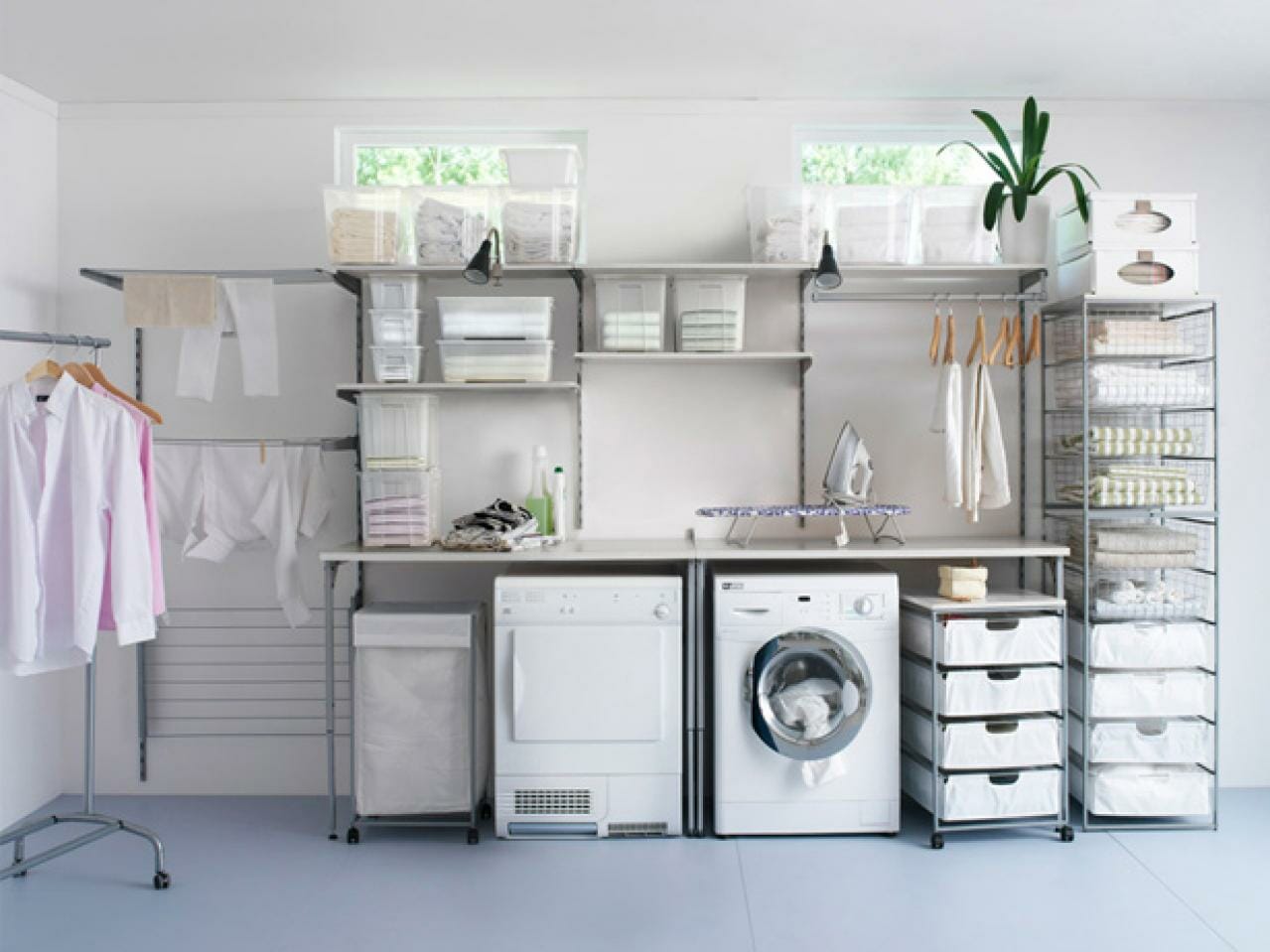
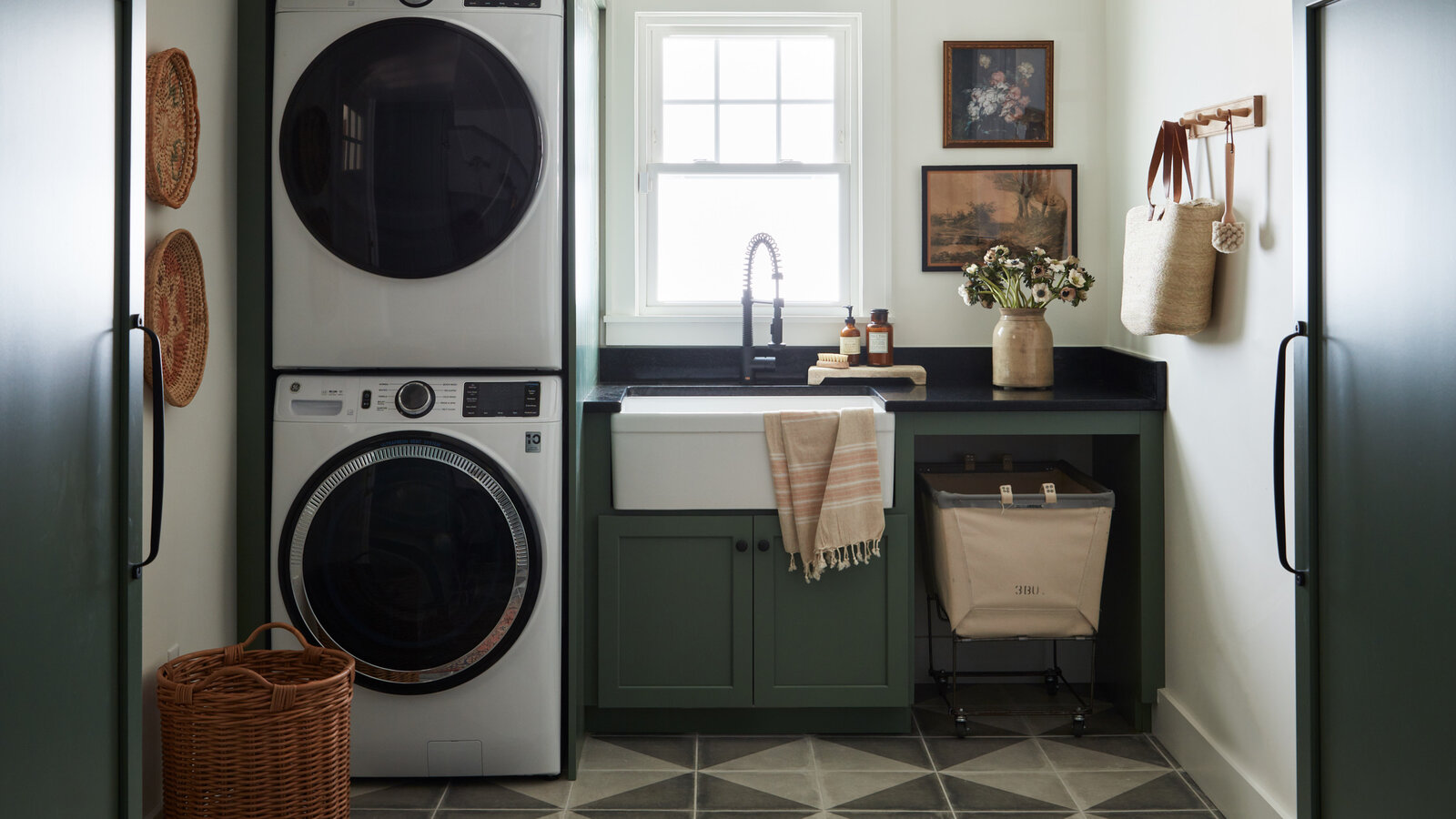
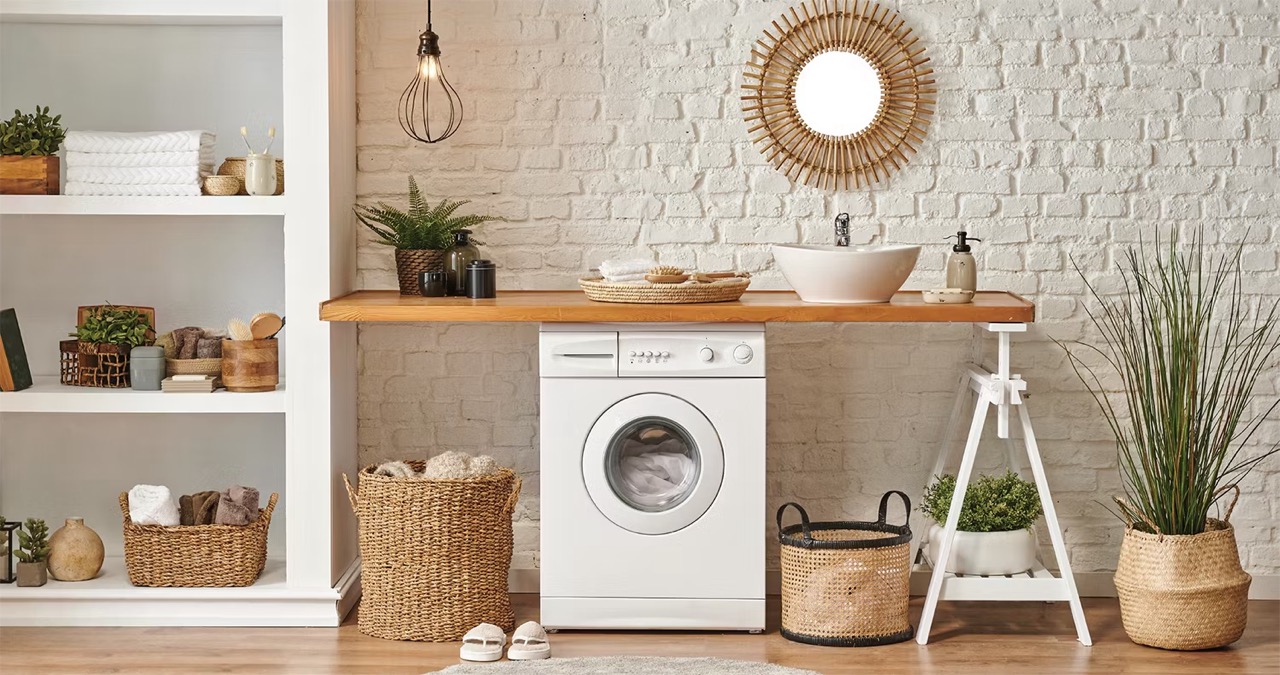
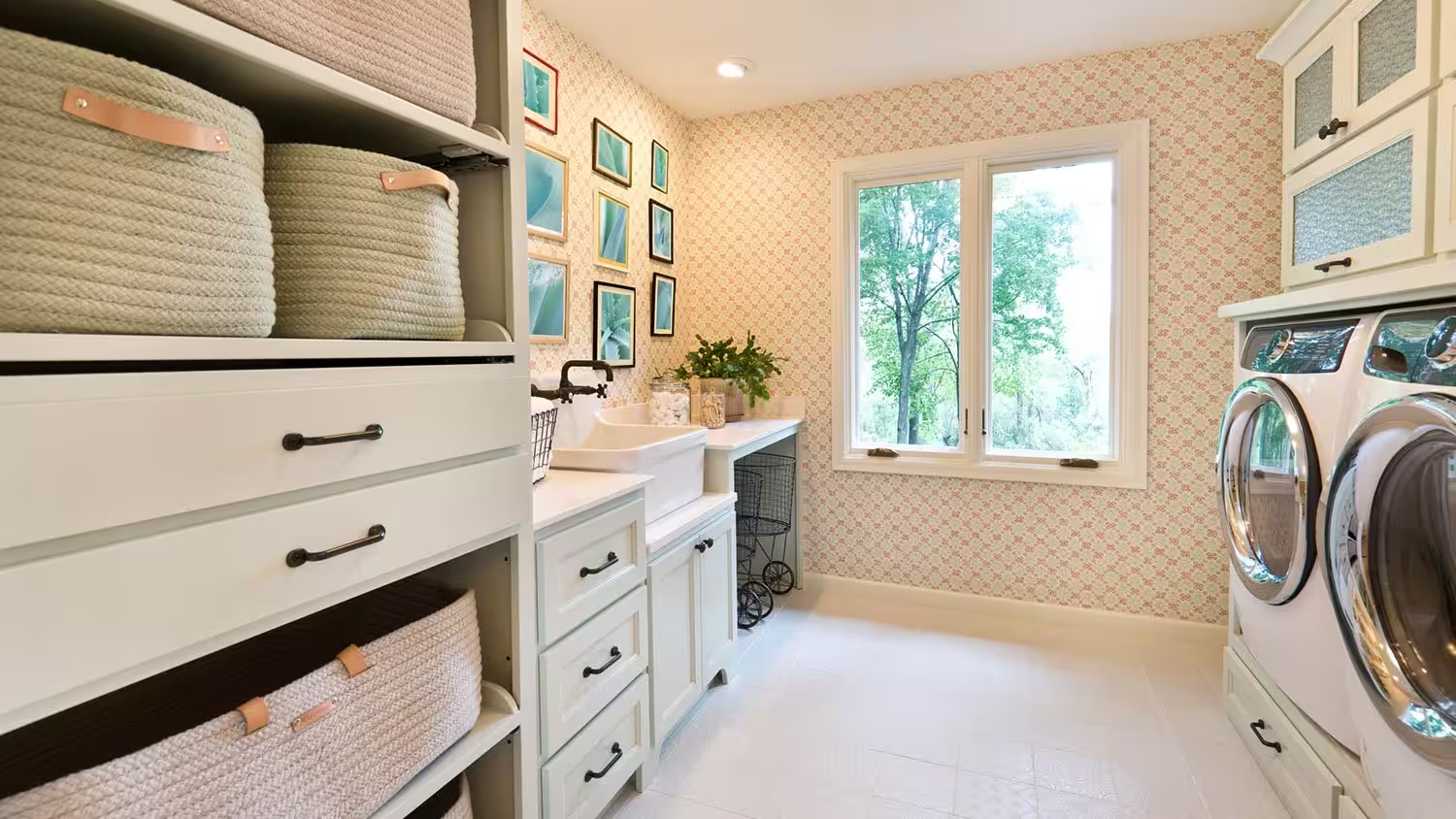
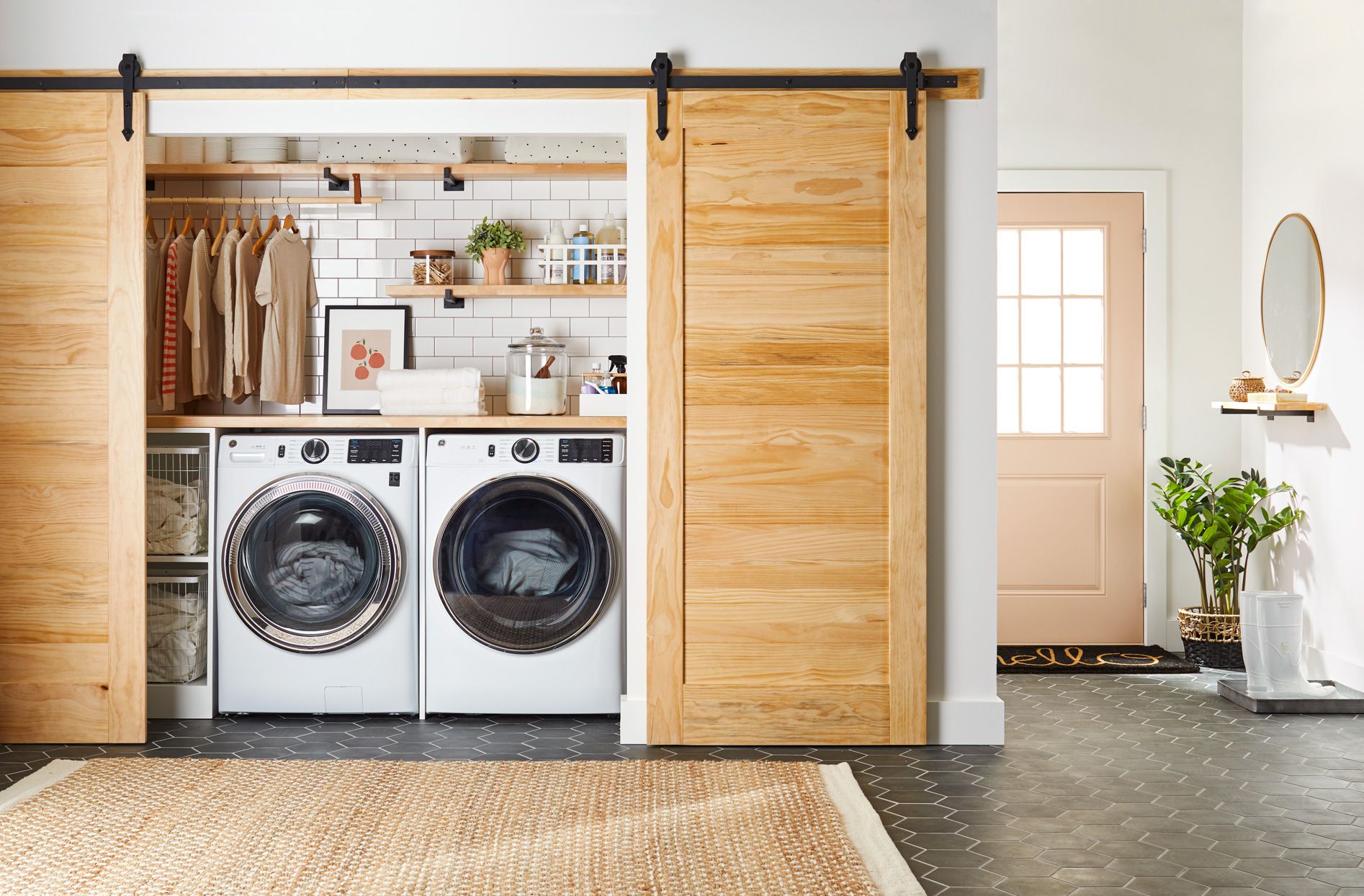
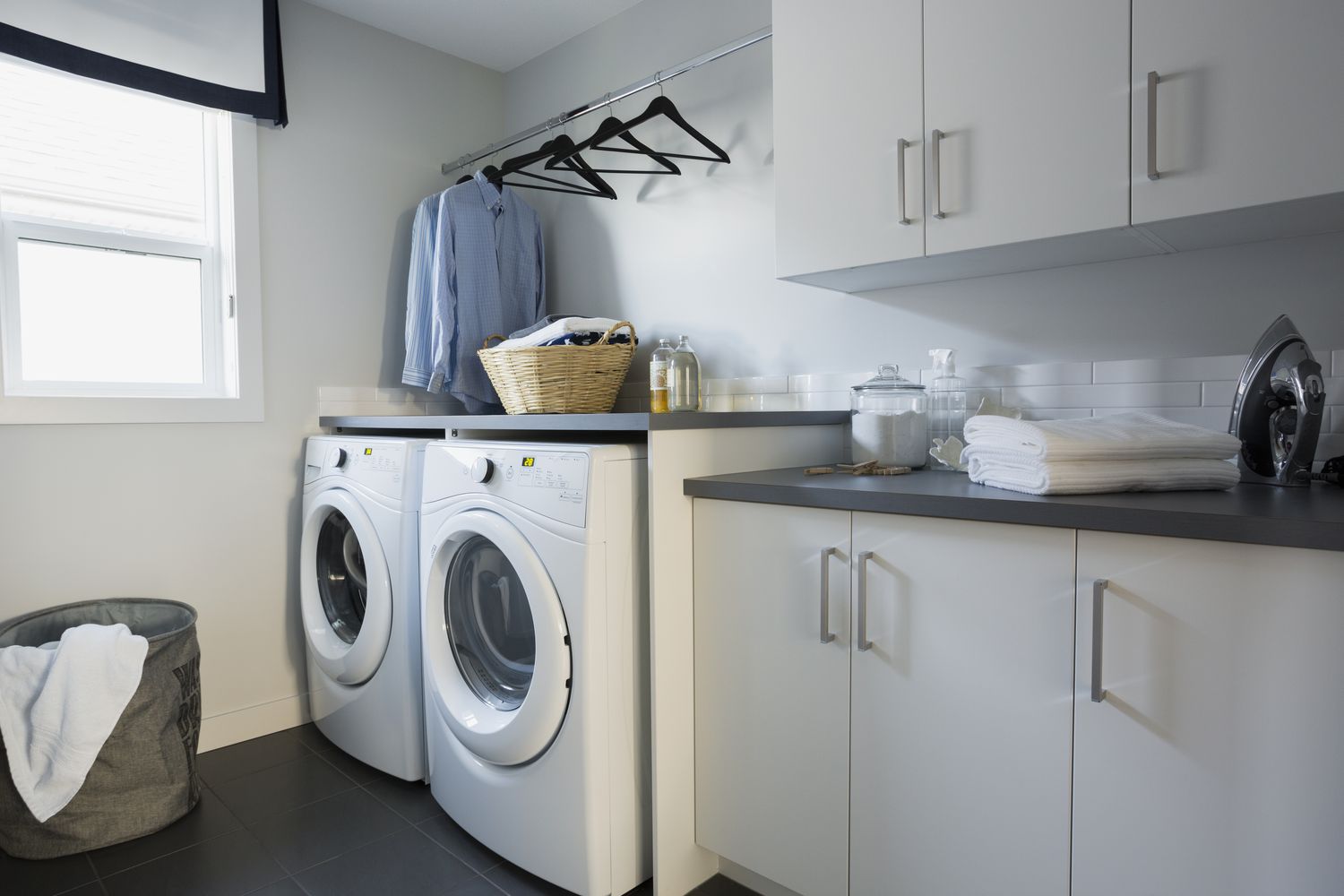
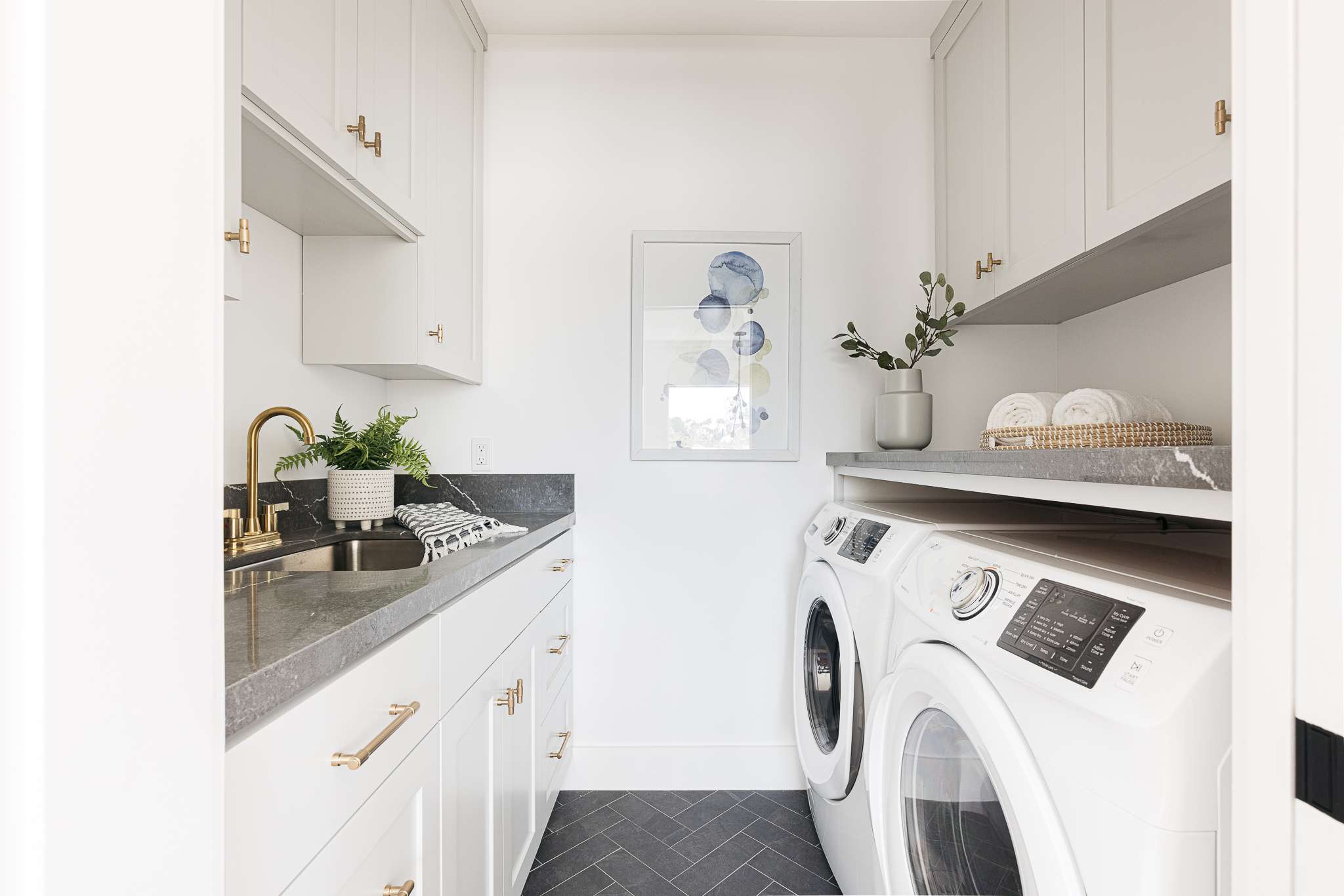
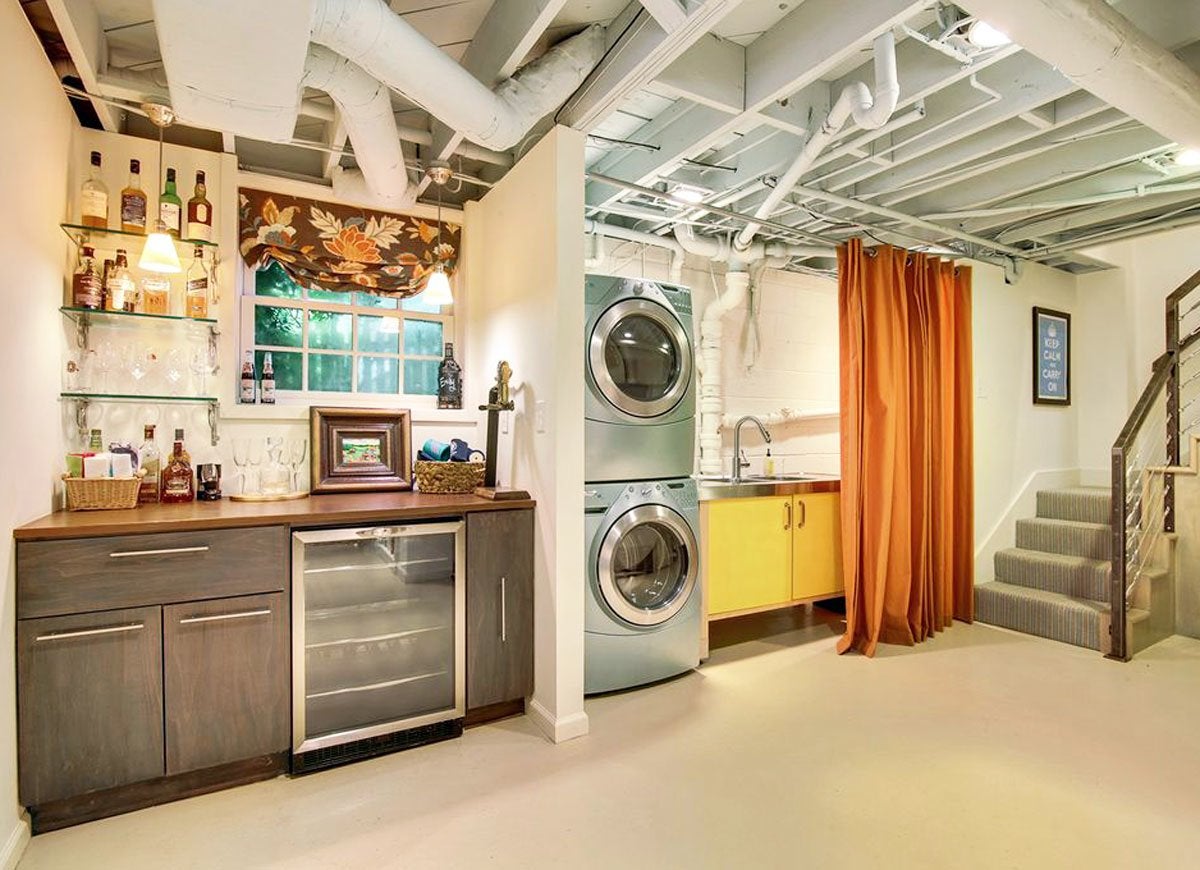
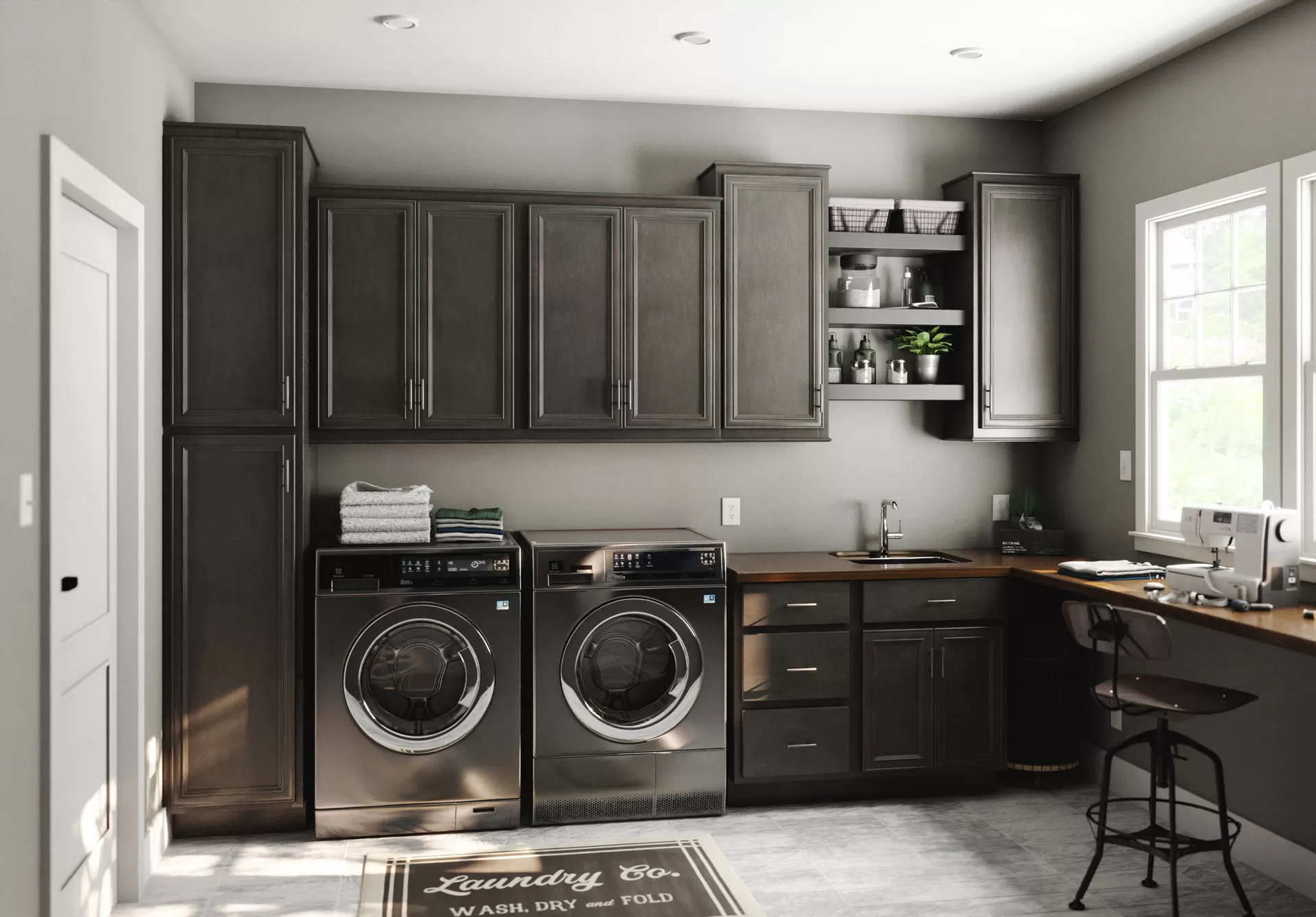
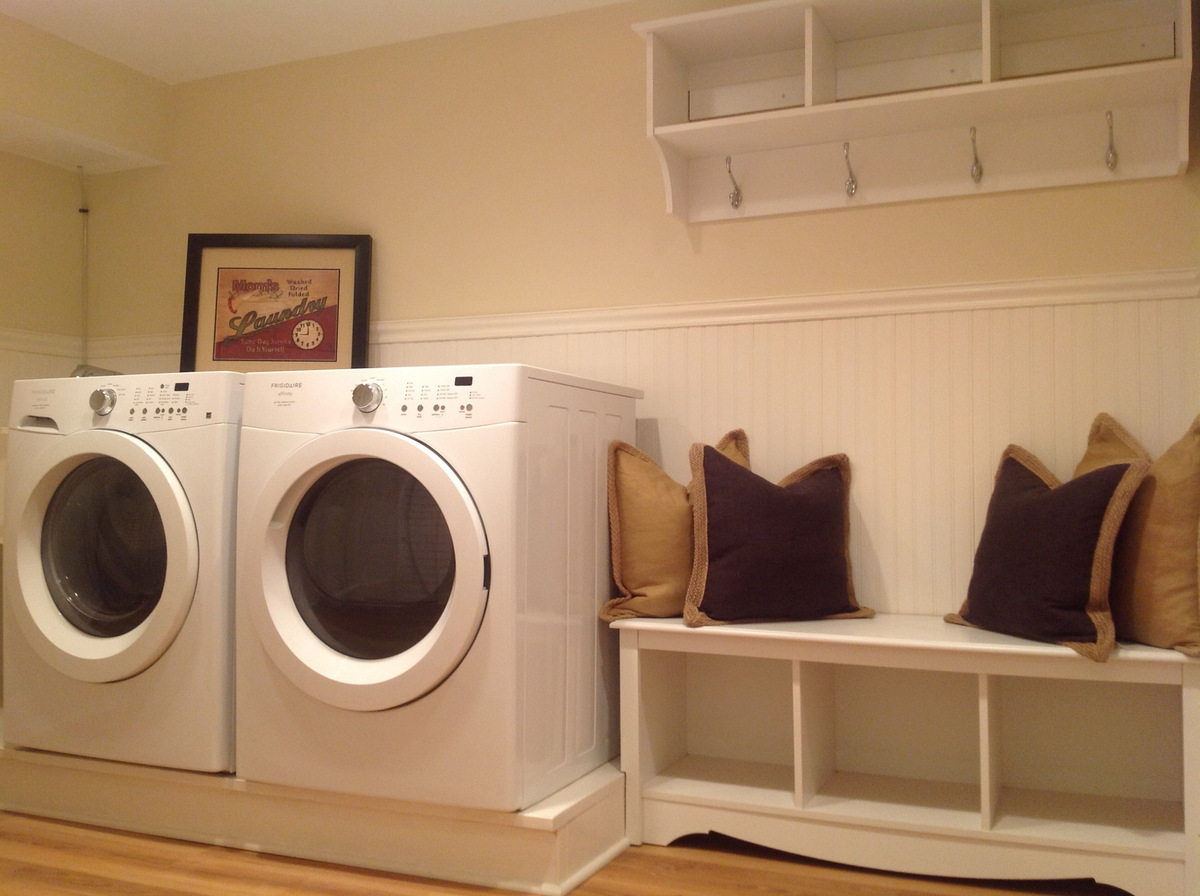
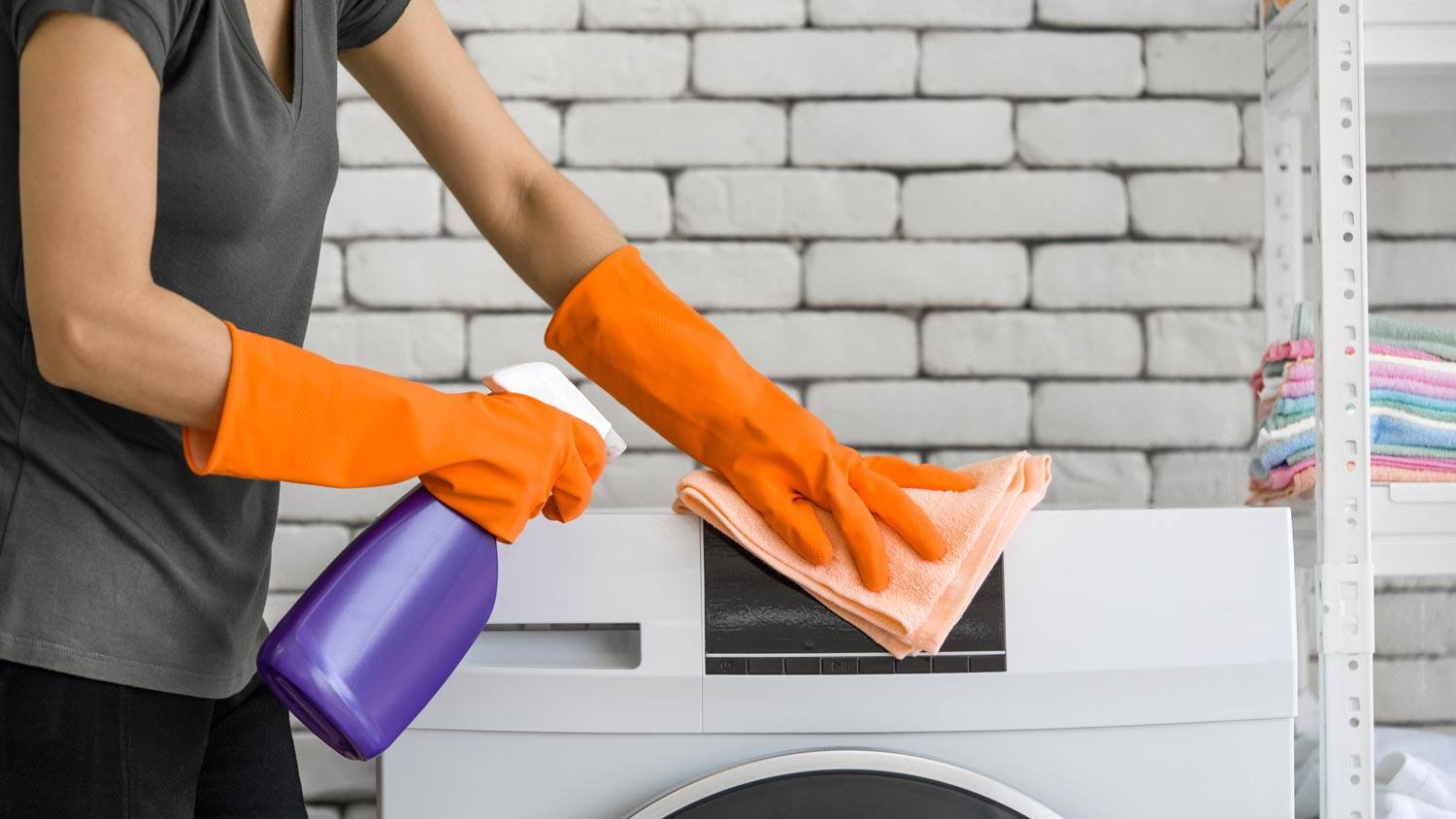
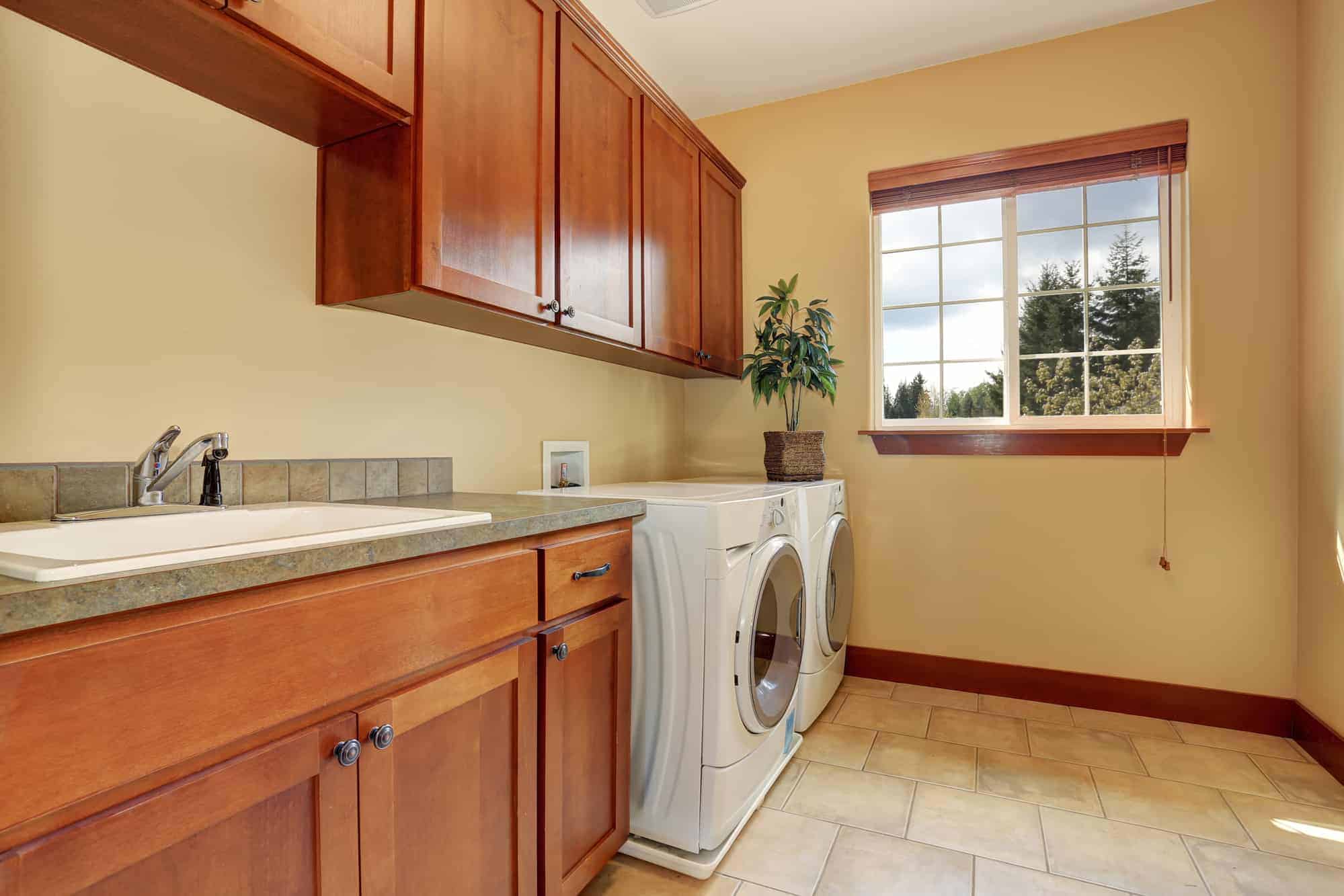
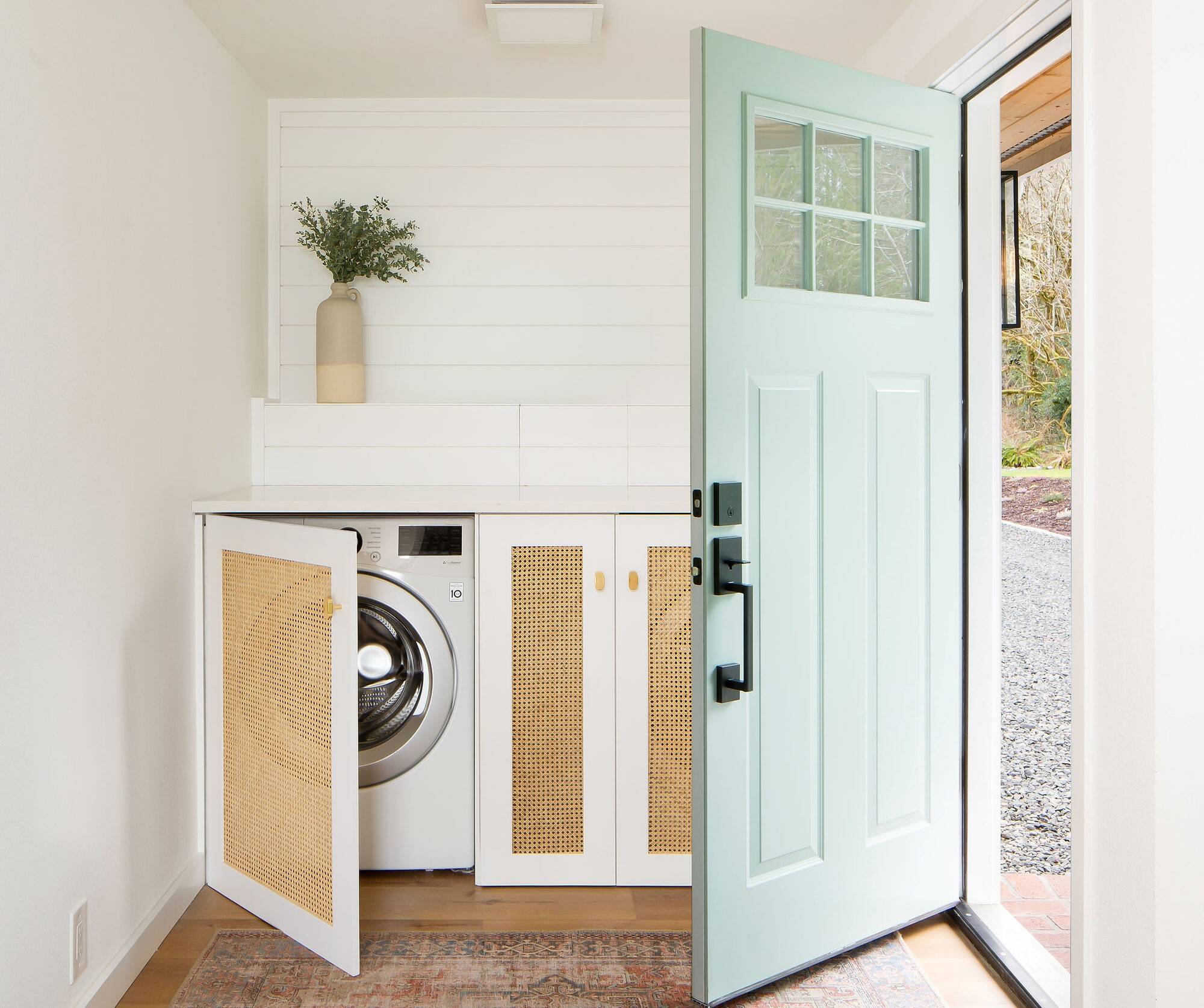

0 thoughts on “How To Design A Laundry Room”